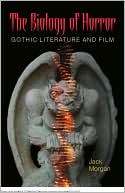Category Books
- Fiction Books & Literature
- Graphic Novels
- Horror
- Mystery & Crime
- Poetry
- Romance Books
- Science Fiction & Fantasy
- Thrillers
- Westerns
- Ages 0-2
- Ages 3-5
- Ages 6-8
- Ages 9-12
- Teens
- Children's Books
- African Americans
- Antiques & Collectibles
- Art, Architecture & Photography
- Bibles & Bible Studies
- Biography
- Business Books
- Christianity
- Computer Books & Technology Books
- Cookbooks, Food & Wine
- Crafts & Hobbies Books
- Education & Teaching
- Engineering
- Entertainment
- Foreign Languages
- Game Books
- Gay & Lesbian
- Health Books, Diet & Fitness Books
- History
- Home & Garden
- Humor Books
- Judaism & Judaica
- Law
- Medical Books
- New Age & Spirituality
- Nonfiction
- Parenting & Family
- Pets
- Philosophy
- Political Books & Current Events Books
- Psychology & Psychotherapy
- Reference
- Religion Books
- Science & Nature
- Self Improvement
- Sex & Relationships
- Social Sciences
- Sports & Adventure
- Study Guides & Test Prep
- Travel
- True Crime
- Weddings
- Women's Studies
The Biology of Horror: Gothic Literature and Film » (1st Edition)

Authors: Jack Morgan
ISBN-13: 9780809324712, ISBN-10: 0809324717
Format: Paperback
Publisher: Southern Illinois University Press
Date Published: October 2002
Edition: 1st Edition
Author Biography: Jack Morgan
Jack Morgan teaches in the English department at the University of Missouri-Rolla. He has published widely in American and Irish literature and is the coeditor, with Louis A. Renza, of The Irish Stories of Sarah Orne Jewett (also available from Southern Illinois University Press).
Book Synopsis
Unearthing the fearful flesh and sinful skins at the heart of gothic horror, Jack Morgan rends the genre’s biological core from its oft-discussed psychological elements and argues for a more transhistorical conception of the gothic, one negatively related to comedy. The Biology of Horror: Gothic Literature and Film dissects popular examples from the gothic literary and cinematic canon, exposing the inverted comic paradigm within each text.
Morgan’s study begins with an extensive treatment of comedy as theoretically conceived by Suzanne Langer, C. L. Barber, and Mikhail Bakhtin. Then, Morgan analyzes the physical and mythological nature of horror in inverted comic terms, identifying a biologically grounded mythos of horror. Motifs such as sinister loci, languishment, masquerade, and subversion of sensual perception are contextualized here as embedded in an organic reality, resonating with biological motives and consequences. Morgan also devotes a chapter to the migration of the gothic tradition into American horror, emphasizing the body as horror’s essential place in American gothic.
The bulk of Morgan’s study is applied to popular gothic literature and films ranging from high gothic classics like Matthew Lewis’s The Monk, Ann Radcliffe’s The Mysteries of Udolpho, Charles Maturin’s Melmoth the Wanderer, and Mary Shelley’s Frankenstein, to later literary works such as Poe’s macabre tales, Melville’s “Benito Cereno,” J.S. Le Fanu’s Uncle Silas, H.P.Lovecraft’s “The Shadow over Innsmouth,” Shirley Jackson’s The Haunting of Hillhouse, Stephen King’s Salem’s Lot, and Clive Barker’s The Damnation Game. Considered films include Nosferatu, Invasion of the Body Snatchers, Friday the 13th, Halloween, Night of the Living Dead, Angel Heart, The Stand, and The Shining.
Morgan concludes his physical examination of the Gothic reality with a consideration born of Julia Kristeva’s theoretical rubric which addresses horror’s existential and cultural significance, its lasting fascination, and its uncanny positive—and often therapeutic—direction in literature and film.
Table of Contents
| Acknowledgments | ||
| Introduction: "The Body Is His Book" | 1 | |
| 1 | Mortal Coils: The Comic-Horror Double Helix | 14 |
| 2 | The Muse of Horror: Traditions of Dreadful Imagining | 37 |
| 3 | Macabre Aesthetics | 67 |
| 4 | The Anxiety of Organism | 90 |
| 5 | Acquaintance with the Night: America and the Muse of Horror | 113 |
| 6 | Dark Carnival: The Esoterics of Celebration | 132 |
| 7 | Languishment: The Wounded Hero | 158 |
| 8 | Sinister Loci: The Properties of Terror | 179 |
| 9 | Apotropaion and the Hideous Obscure | 200 |
| 10 | The Soul at Zero: Dark Epiphanies | 224 |
| Notes | 235 | |
| Works Cited | 243 | |
| Index | 253 |
Subjects
 Literary Criticism
Literary Criticism  Genres & Literary Forms
Genres & Literary FormsFiction Books & Literature
 Literary Criticism
Literary Criticism  Literary Movements
Literary MovementsEntertainment
 Books on Film
Books on Film  Film Genres
Film GenresNonfiction
 Entertainment
Entertainment  Books on Film
Books on Film
